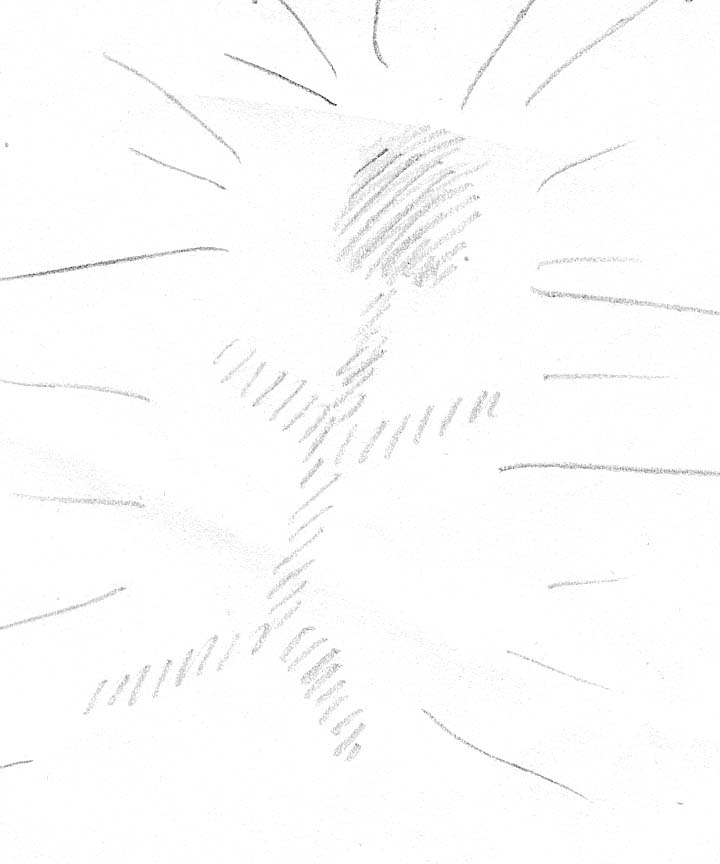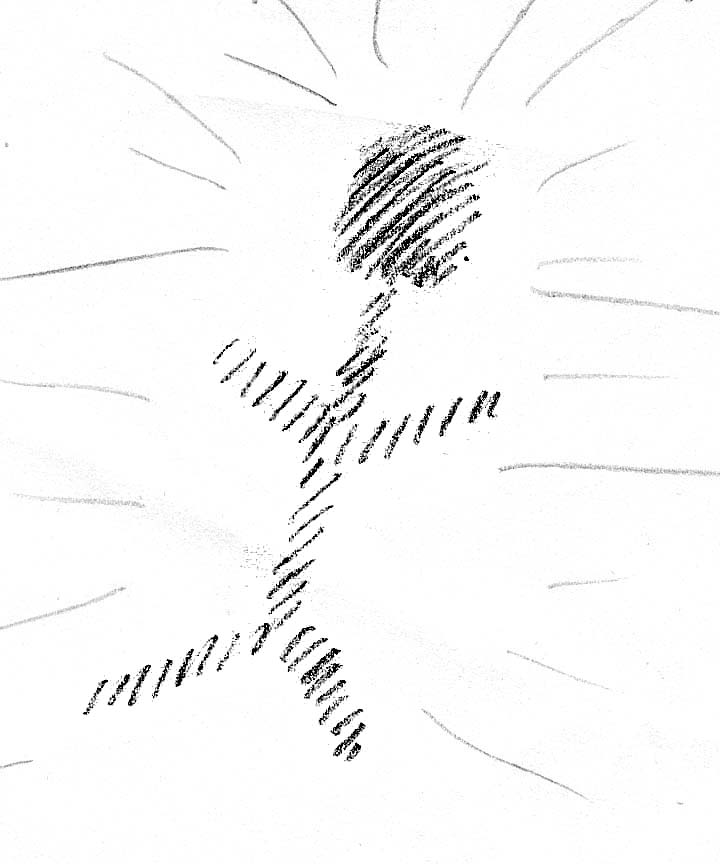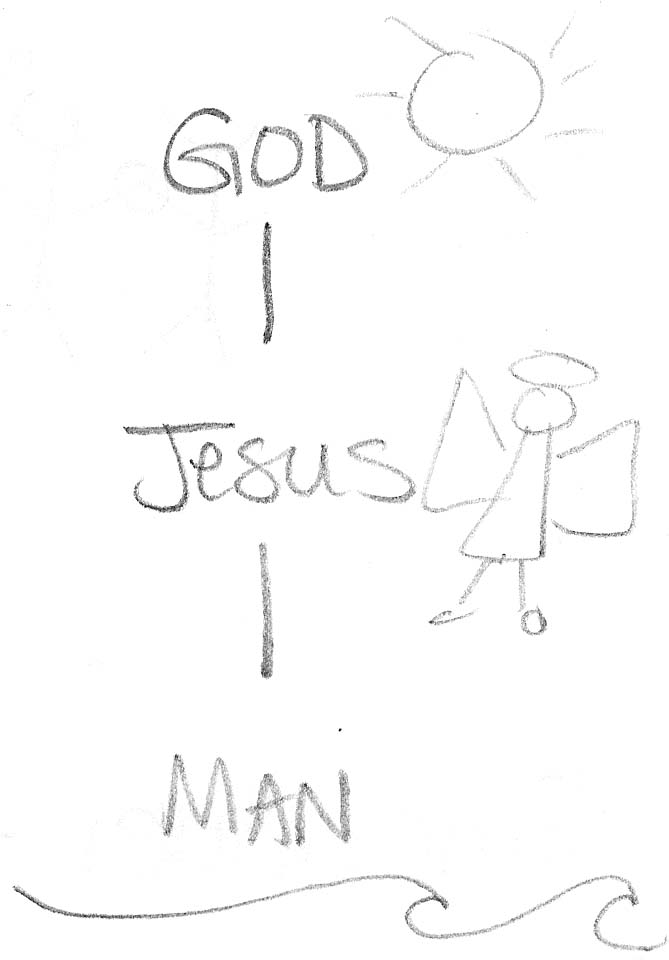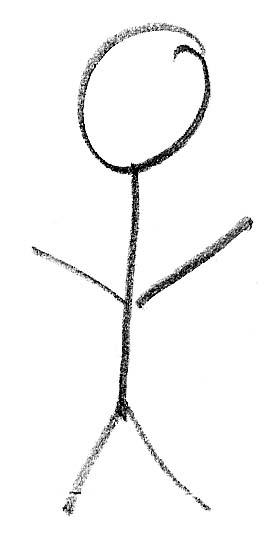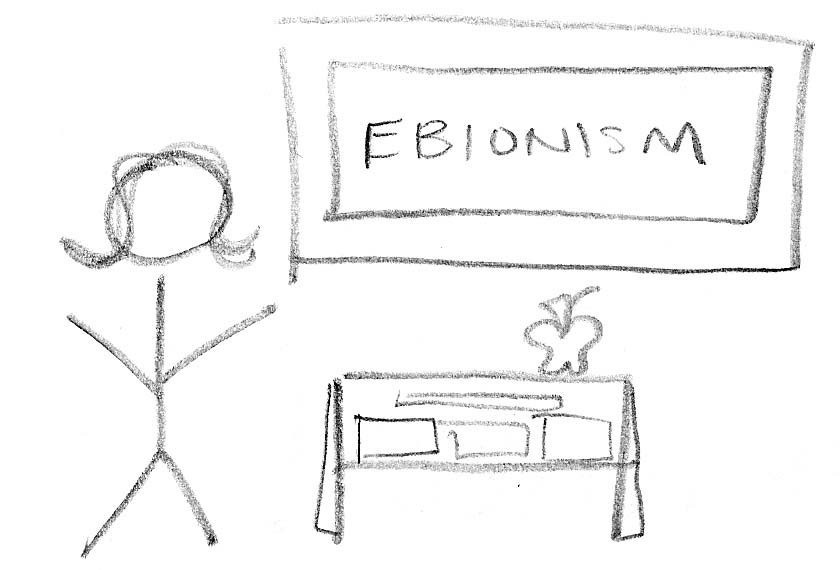
|
II. Jesus as Exemplar: Ebionism (an awesome human points us toward God) Jesus is a man chosen for special divine sonship (like David). Jesus is created, not begotten; not God made human, but an inspired prophet. Contemporary schools: Islam, early Unitarianism. A church merely stressing Jesus as teacher or example is functionally Ebionite. |

|
III. Jesus as Overachiever: Adoptionism (a human so awesome he earns divine status) Jesus becomes divine during his life (at his baptism?). Jesus is chosen for his prior human virtue. Sonship is reduced to obedience; Jesus' relationship with God is just moral. Jesus' righteous example shows the way to our salvation (cf. Roger Bannister). Contemporary school: some Latter-day Saints. A legalistic church is functionally adoptionist. |

|
IV. Jesus as Alter Ego: Nestorianism (an awesome human aligned with an awesome God) Nestorius objected to the Alexandrian use of theotokos for Mary. Mary mothered only Jesus' human nature, not the person of God the Son. Christ's two persons are united morally, with adoptionistic consequences (Smeagol/Gollum, or Quirrell+Valdemort). Contemporary school: Churches of the East. A Jesus struggling between divine and human is functionally Nestorian. |
